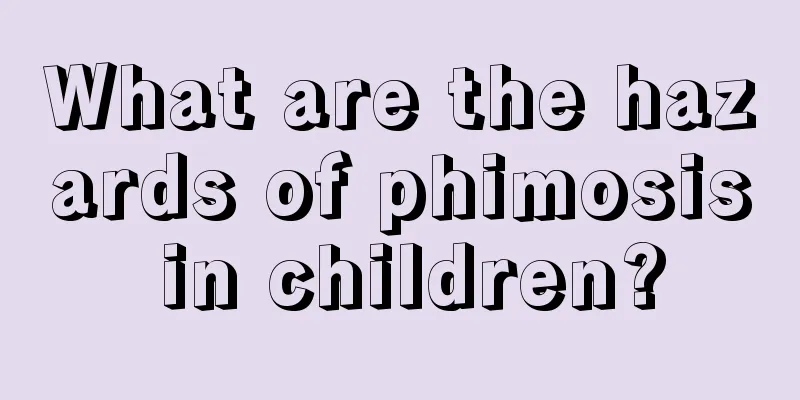How to treat baby's calcium deficiency chicken breast

|
Pigeon chest in children is a very common disease in daily life. It not only causes great harm to the patient's physical health, but also seriously affects their normal life. People need to seek medical treatment in time when they find related symptoms and choose appropriate treatment methods according to their own physical condition in order to recover health as soon as possible. ●"Pigeon chest" is one of the symptoms of nutritional vitamin D deficiency rickets. It appears in the active stage of rickets and is caused by the sternum and adjacent cartilage protruding forward, forming a "pigeon chest-like" deformity. Rickets in infants under 6 months old is mainly characterized by skull changes, with a "ping-pong ball feeling"; a "square box-like" head shape appears at 7-8 months; the epiphyseal ends swell and resemble rib beads due to the accumulation of bone-like tissue; round, ring-like protrusions on the wrists and ankles are called hand and ankle bracelets; children can stand and walk alone with genu varum "O" shape or genu valgum "X" shape, etc.; children with severe rickets have a horizontal depression on the lower edge of the thorax, which is medically called the costophrenic groove or Howe's groove, which is sometimes distinguished from the slightly higher rib margins on both sides of the thorax of normal children. ●Early diagnosis and timely treatment can avoid bone deformities. The correct diagnosis must be based on the cause of vitamin D deficiency, clinical manifestations, blood biochemistry and bone X-ray examination. (Due to early symptoms such as excessive sweating, pillow loss, and restlessness, there is no specificity.) ●The goal of treatment is to control the active period and prevent bone deformities. The principle of treatment should be based on oral vitamin D preparations. ●Nutritional vitamin D deficiency rickets is a self-limiting disease. Studies have shown that sunlight exposure and physiological doses of vitamin D (400 IU) can treat rickets. Therefore, it is now considered that ensuring children get 400 IU of vitamin D daily is the key to prevention and treatment. Cod liver oil medicines contain vitamin A. ●Children with pigeon chest under 3 years old should be actively given anti-rickets treatment, including calcium and vitamin D supplements. However, children over 3 years old mostly have sequelae, and the use of vitamin D and calcium treatment is ineffective. Generally, mild pectus carinatum will gradually disappear as the body grows. Strengthening physical exercise, such as chest expansion, push-ups and other exercises, can accelerate the correction of the deformity. The results of surgical treatment were not satisfactory. During the growth and development period, if boys exercise to make their pectoralis major muscles plump and strong, the appearance of their pectus carinatum can be improved. After puberty, the development of the breasts of girls can compensate for the deformity of the sternum. Therefore, unless the deformity is severe, surgical treatment is generally not recommended. |
<<: Quick relief for children vomiting due to cold
>>: Baby's eyes and nose are blue
Recommend
What should children eat to grow taller?
In daily life, we often hear many mothers complai...
How to make pumpkin puree for baby food
When choosing complementary food for babies, you ...
What to eat when a two-year-old has a cough
Children's coughing is a situation that many ...
How to treat hemangioma on baby’s head? Treatment of hemangioma on baby's head
Hemangioma is also common in infants' heads. ...
How long after the umbilical cord falls off can I touch water?
We all know that when a baby is in the mother'...
What are the treatments for precocious puberty?
Precocious puberty is a very common problem, whic...
Reasons and treatment suggestions for babies who don’t like to breastfeed at 4 months old
Some babies don't like to breastfeed, so how ...
How to treat baby humming while sleeping
Children's physical condition is getting wors...
Children's anti-inflammatory drug cephalexin
Anti-inflammatory drugs are antibiotics. Anti-inf...
What are the symptoms of dacryocystitis in infants and young children?
Infants and young children have tears and snot al...
Don't buy these five types of cakes for your children
Many families prepare some desserts such as small...
How to cure hair loss in students
Hair loss among students is an abnormal phenomeno...
Children who take Qizhen Pills will have diarrhea
Speaking of Xiaoer Qizhen Pills, I believe many p...
Causes of recurrent asthma attacks in children in autumn and winter
Children are more likely to experience symptoms o...
How to diagnose amblyopia in children?
Amblyopia and myopia have become one of the probl...









